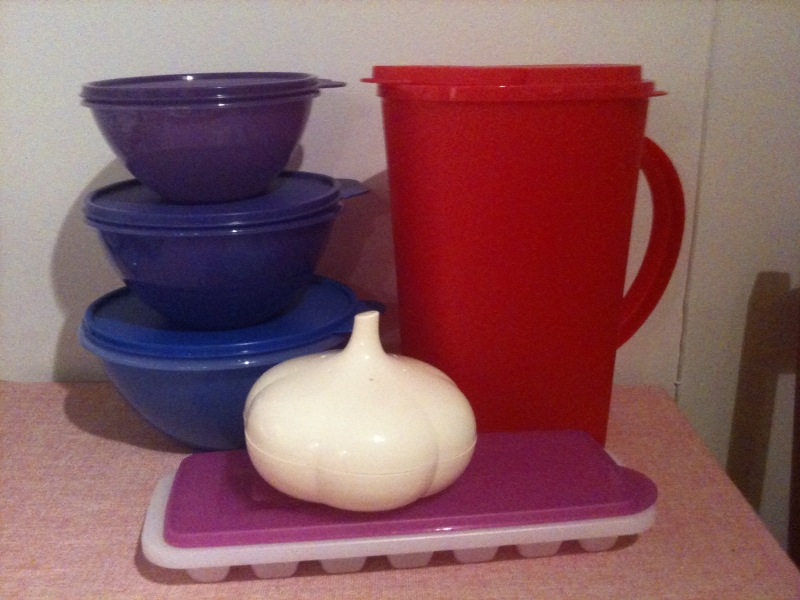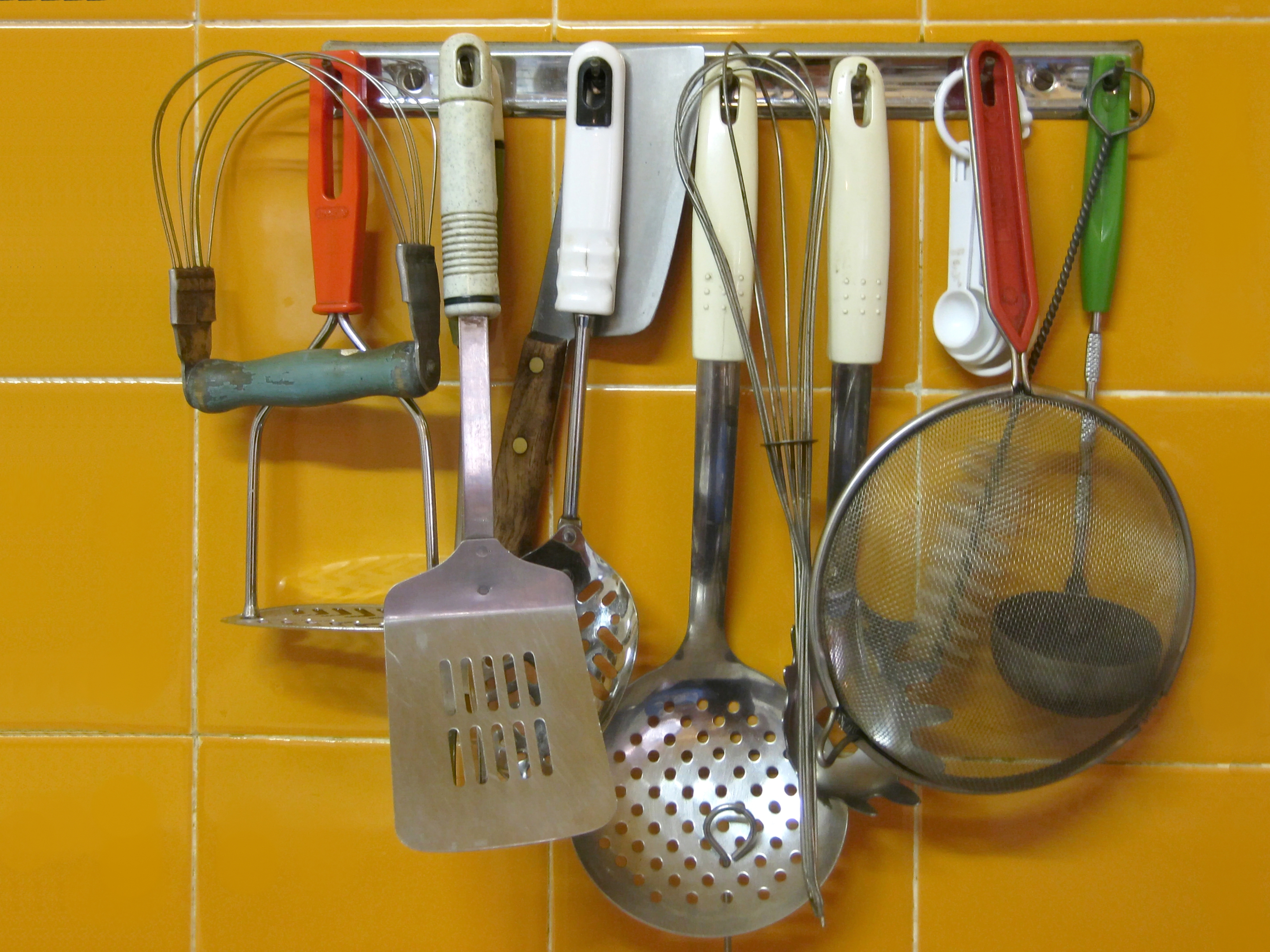|
Emsa (household Goods)
Emsa GmbH is an innovative medium-sized ( SME) German manufacturer of consumer goods, kitchen utensils, garden equipment and garden accessories who has achieved to establish an internationally recognized trademark for a variety of niches. History Emsa was founded on 1 April 1949 {{Cite web, url=http://www.alibaba.com/member/emsagmbh.html, title= Emsa is a large German manufacturer and distributor of household goods established in 1949, access-date=2011-05-08 by Franz Wulf as „Franz Wulf & Co Plasticwarenfabrik" in Greven. A little drip-catcher made of plastic and formed like a butterfly was the company's first product. After drip-catchers of different forms the company started producing pastry-cutting wheels, icing bags and comparable kitchen accessories. On 1 October 1956 the company moved from Greven to larger premises in Emsdetten and added floristry utensils to its range of products. Emsa was acquired by the French corporation SEB in June 2016 for an undisclosed sum. ... [...More Info...] [...Related Items...] OR: [Wikipedia] [Google] [Baidu] |
Medium-sized Business
Small and medium-sized enterprises (SMEs) or small and medium-sized businesses (SMBs) are businesses whose personnel and revenue numbers fall below certain limits. The abbreviation "SME" is used by international organizations such as the World Bank, the European Union, the United Nations, and the World Trade Organization (WTO). In any given national economy, SMEs sometimes outnumber large companies by a wide margin and also employ many more people. For example, Australian SMEs makeup 98% of all Australian businesses, produce one-third of the total GDP (gross domestic product) and employ 4.7 million people. In Chile, in the commercial year 2014, 98.5% of the firms were classified as SMEs. In Tunisia, the self-employed workers alone account for about 28% of the total non-farm employment, and firms with fewer than 100 employees account for about 62% of total employment. The United States' SMEs generate half of all U.S. jobs, but only 40% of GDP. Developing countries tend to have a la ... [...More Info...] [...Related Items...] OR: [Wikipedia] [Google] [Baidu] |
Tupperware
Tupperware is an American home products line that includes preparation, storage, and serving products for the kitchen and home. In 1942, Earl Tupper developed his first bell-shaped container; the brand products were introduced to the public in 1946. Tupperware develops, manufactures, and internationally distributes its products as a wholly owned subsidiary of its parent company Tupperware Brands; as of 2007, it was sold by means of approximately 1.9 million direct salespeople on contract. In 2013, the top marketplace for Tupperware was Indonesia, which topped Germany as the second. Indonesia's sales in 2013 were more than $200 million. Company history Tupperware was developed in 1946 by Earl Tupper (1907-1983) in Leominster, Massachusetts. He developed plastic containers to be used in households to contain food and keep them airtight, which featured a then-patented "burping seal". Tupper had already invented the plastic for Tupperware in 1938, but the product succeeded with th ... [...More Info...] [...Related Items...] OR: [Wikipedia] [Google] [Baidu] |
Containers
A container is any receptacle or enclosure for holding a product used in storage, packaging, and transportation, including shipping. Things kept inside of a container are protected on several sides by being inside of its structure. The term is most frequently applied to devices made from materials that are durable and are often partly or completely rigid. A container can also be considered as a basic tool, consisting of any device creating a partially or fully enclosed space that can be used to contain, store, and transport objects or materials. History Humans have used containers for at least 100,000 years, and possibly for millions of years.Clive Gamble, ''Origins and Revolutions: Human Identity in Earliest Prehistory'' (2007), p. 204. The first containers were probably invented for storing food, allowing early humans to preserve more of their food for a longer time, to carry it more easily, and also to protect it from other animals. The development of food storage cont ... [...More Info...] [...Related Items...] OR: [Wikipedia] [Google] [Baidu] |
Kitchenware Brands
:'' For a record label, see Kitchenware Records'' Kitchenware are the tools, utensils, appliances, dishes, and cookware used in food preparation, or the serving of food. Kitchenware can also be used in order to hold or store food before or after preparation. Types Kitchenware encompasses a wide range of tools. Some of the most common items of kitchenware are: See also * Batterie de cuisine * Cookware and bakeware * Gastronorm, a European size standard for kitchenware * List of cooking vessels * List of eating utensils * List of food preparation utensils * List of glassware * List of Japanese cooking utensils * List of serving utensils * List of types of spoons * NSF International, formerly "National Sanitation Foundation" * Tableware Tableware is any dish or dishware used for setting a table, serving food, and dining. It includes cutlery, List of glassware, glassware, serving dishes, and other items for practical as well as decorative purposes. The quality, nature ... [...More Info...] [...Related Items...] OR: [Wikipedia] [Google] [Baidu] |
Companies Based In North Rhine-Westphalia
A company, abbreviated as co., is a legal entity representing an association of people, whether natural, legal or a mixture of both, with a specific objective. Company members share a common purpose and unite to achieve specific, declared goals. Companies take various forms, such as: * voluntary associations, which may include nonprofit organizations * business entities, whose aim is generating profit * financial entities and banks * programs or educational institutions A company can be created as a legal person so that the company itself has limited liability as members perform or fail to discharge their duty according to the publicly declared incorporation, or published policy. When a company closes, it may need to be liquidated to avoid further legal obligations. Companies may associate and collectively register themselves as new companies; the resulting entities are often known as corporate groups. Meanings and definitions A company can be defined as an "artificial per ... [...More Info...] [...Related Items...] OR: [Wikipedia] [Google] [Baidu] |
Manufacturing Companies Established In 1949
Manufacturing is the creation or production of goods with the help of equipment, labor, machines, tools, and chemical or biological processing or formulation. It is the essence of secondary sector of the economy. The term may refer to a range of human activity, from handicraft to high-tech, but it is most commonly applied to industrial design, in which raw materials from the primary sector are transformed into finished goods on a large scale. Such goods may be sold to other manufacturers for the production of other more complex products (such as aircraft, household appliances, furniture, sports equipment or automobiles), or distributed via the tertiary industry to end users and consumers (usually through wholesalers, who in turn sell to retailers, who then sell them to individual customers). Manufacturing engineering is the field of engineering that designs and optimizes the manufacturing process, or the steps through which raw materials are transformed into a final product. T ... [...More Info...] [...Related Items...] OR: [Wikipedia] [Google] [Baidu] |
Administration Of Business
Business administration, also known as business management, is the administration of a commercial enterprise. It includes all aspects of overseeing and supervising the business operations of an organization. From the point of view of management and leadership, it also covers fields that include office building administration, accounting, finance, designing, development, quality assurance, data analysis, sales, project management, information-technology management, research and development, and marketing. Overview The administration of a business includes the performance or management of business operations and decision-making, as well as the efficient organization of people and other resources to direct activities towards common goals and objectives. In general, "administration" refers to the broader management function, including the associated finance, personnel and MIS services. Administration can refer to the bureaucratic or operational performance of routine office task ... [...More Info...] [...Related Items...] OR: [Wikipedia] [Google] [Baidu] |
Product Development
In business and engineering, new product development (NPD) covers the complete process of bringing a new product to market, renewing an existing product or introducing a product in a new market. A central aspect of NPD is product design, along with various business considerations. New product development is described broadly as the transformation of a market opportunity into a product available for sale. The products developed by an organisation provide the means for it to generate income. For many technology-intensive firms their approach is based on exploiting technological innovation in a rapidly changing market. The product can be tangible (something physical which one can touch) or intangible (like a service or experience), though sometimes services and other processes are distinguished from "products". NPD requires an understanding of customer needs and wants, the competitive environment, and the nature of the market. Cost, time, and quality are the main variables that driv ... [...More Info...] [...Related Items...] OR: [Wikipedia] [Google] [Baidu] |
Manufacturing
Manufacturing is the creation or production of goods with the help of equipment, labor, machines, tools, and chemical or biological processing or formulation. It is the essence of secondary sector of the economy. The term may refer to a range of human activity, from handicraft to high-tech, but it is most commonly applied to industrial design, in which raw materials from the primary sector are transformed into finished goods on a large scale. Such goods may be sold to other manufacturers for the production of other more complex products (such as aircraft, household appliances, furniture, sports equipment or automobiles), or distributed via the tertiary industry to end users and consumers (usually through wholesalers, who in turn sell to retailers, who then sell them to individual customers). Manufacturing engineering is the field of engineering that designs and optimizes the manufacturing process, or the steps through which raw materials are transformed into a final p ... [...More Info...] [...Related Items...] OR: [Wikipedia] [Google] [Baidu] |
Distribution Channel
Distribution (or place) is one of the four elements of the marketing mix. Distribution is the process of making a product or service available for the consumer or business user who needs it. This can be done directly by the producer or service provider or using indirect channels with distributors or intermediaries. The other three elements of the marketing mix are product, pricing, and promotion. Decisions about distribution need to be taken in line with a company's overall strategic vision and mission. Developing a coherent distribution plan is a central component of strategic planning. At the strategic level, there are three broad approaches to distribution, namely mass, selective and exclusive distribution. The number and type of intermediaries selected largely depend on the strategic approach. The overall distribution channel should add value to the consumer. Definition Distribution is fundamentally concerned with ensuring that products reach target customers in the most d ... [...More Info...] [...Related Items...] OR: [Wikipedia] [Google] [Baidu] |
Headquarter
Headquarters (commonly referred to as HQ) denotes the location where most, if not all, of the important functions of an organization are coordinated. In the United States, the corporate headquarters represents the entity at the center or the top of a corporation taking full responsibility for managing all business activities. In the United Kingdom, the term head office (or HO) is most commonly used for the headquarters of large corporations. The term is also used regarding military organizations. Corporate A headquarters is the entity at the top of a corporation that takes full responsibility for the overall success of the corporation, and ensures corporate governance. The corporate headquarters is a key element of a corporate structure and covers different corporate functions such as strategic planning, corporate communications, tax, legal, marketing, finance, human resources, information technology, and procurement. This entity includes the chief executive officer (CEO) as a ... [...More Info...] [...Related Items...] OR: [Wikipedia] [Google] [Baidu] |
_respondents_in_East_Africa.png)





.jpg)
